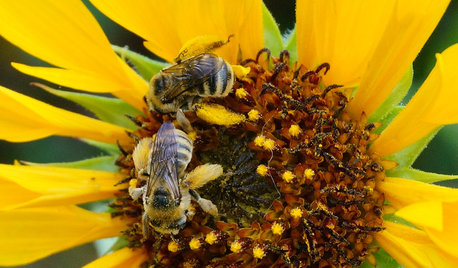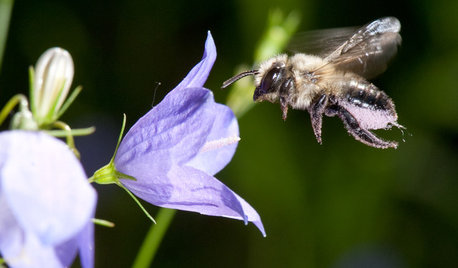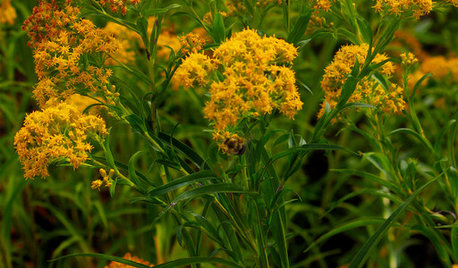Diversity to Help Bees, +Roses
Tessiess, SoCal Inland, 9b, 1272' elev
9 years ago
Related Stories

EARTH DAY12 Entertaining ‘Bee-haviors’ of Native Bees
The parade of pollinator antics is another reason to create a garden that nurtures native bees
Full Story
GARDENING GUIDESPut Out the Welcome Mat for Leafcutter Bees in Your Garden
Provide a diversity of flowering plants from spring through fall for these charismatic native bees, and you won’t be disappointed
Full Story
FLOWERS AND PLANTSHelp Monarchs and Other Butterflies by Planting Common Milkweed
Summer-blooming Asclepias syriaca is an important larval host plant for the monarch butterfly and attracts a number of pollinating insects
Full Story
GARDENING FOR BUTTERFLIESGardening for the Bees, and Why It’s a Good Thing
When you discover how hard bees work for our food supply, you may never garden without them in mind again
Full Story
GARDENING GUIDESPlant Black Cherry Trees for the Birds and Bees
Plant Prunus serotina in the Central and Eastern U.S. for spring flowers, interesting bark and beautiful fall color
Full Story
EARTH DAYHow to Design a Garden for Native Bees
Create a garden that not only looks beautiful but also nurtures native bees — and helps other wildlife in the process
Full Story
FLOWERS AND PLANTSThis Sunny Yellow Flower Helps Fall Pollinators and Landscapes
Oligoneuron riddellii’s distinct grass-like leaves and bright flowers jazz up the garden in the upper Midwest and Central Plains
Full Story
GARDENING GUIDESInvite Mining Bees to Your Garden by Planting Their Favorite Plants
Look for mining bees (Andrena) pollinating woodland wildflowers in U.S. gardens this spring
Full Story
GARDENING AND LANDSCAPINGBe a Citizen Scientist to Help Wildlife, Learn and Have Fun Too
Track butterflies, study birds, capture stars ... when you aid monitoring efforts, you’re lending Mother Nature a hand
Full Story
GARDENING GUIDES15 Native Flowers That Feed Native Bees
These perennials offer superfood to hundreds of bees and are gorgeous in their own right
Full Story








jacqueline9CA
ingrid_vc so. CA zone 9
Related Professionals
Washington Landscape Architects & Landscape Designers · McKinney Landscape Contractors · Peabody Landscape Contractors · Dunwoody Landscape Contractors · Englewood Landscape Contractors · Kearny Landscape Contractors · Metairie Landscape Contractors · View Park-Windsor Hills Landscape Contractors · Welby Landscape Contractors · Wells Landscape Contractors · Wickliffe Landscape Contractors · Harvey Swimming Pool Builders · Rowlett Swimming Pool Builders · Portland Siding & Exteriors · Largo Siding & ExteriorsBrittie - La Porte, TX 9a
Kippy
subk3
melissa_thefarm
buford
rosefolly
rosefolly
ArbutusOmnedo 10/24
kathyannd
Ninkasi
melissa_thefarm
cath41
kathyannd
User
CapeRoses
shopshops
damask55linen
kathyannd
Marlorena
Vicissitudezz
Kippy
Vicissitudezz
shopshops